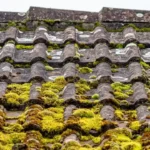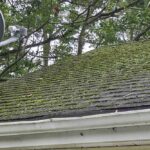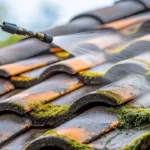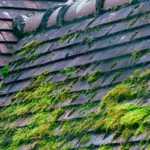In the heart of bustling cities, where concrete landscapes dominate, the concept of urban agriculture green roofs is gaining momentum as a beacon of sustainability. These innovative structures combine the benefits of green roofing with the practicality of agriculture, offering a dual solution to urban challenges. By transforming rooftops into lush gardens, cities can combat environmental issues, enhance aesthetics, and provide fresh produce, all while optimizing space.
As urbanization continues to rise, the need for sustainable solutions becomes more pressing. Urban agriculture green roofs not only address environmental concerns but also contribute to the wellbeing of city dwellers. This article explores the multifaceted advantages of these green innovations and how they are reshaping urban landscapes.

What Are Urban Agriculture Green Roofs?
Urban agriculture green roofs are rooftops covered with vegetation that also serve as spaces for growing crops. These green spaces are engineered to support plant life and can range from simple grass covers to complex gardens with diverse plant species. They help in reducing heat, improving air quality, and providing fresh produce right in the heart of the city.
Components of Green Roofs
A typical green roof consists of several layers, including waterproofing, root barriers, drainage systems, and a growing medium. These layers ensure the roof’s integrity while supporting plant life. The choice of plants depends on the roof’s design, climate, and the intended purpose of the green space.
Benefits of Urban Agriculture Green Roofs
Environmental Impact
One of the primary benefits of urban agriculture green roofs is their positive impact on the environment. They help in reducing the urban heat island effect by providing shade and releasing moisture into the atmosphere. This cooling effect can significantly reduce energy costs and improve air quality in densely populated areas.
Economic Advantages
Beyond environmental benefits, green roofs offer economic advantages. They extend the lifespan of roofing materials by protecting them from extreme weather conditions and UV radiation. This can be explored further in articles like green roof lifespan. Additionally, they increase property value and can reduce stormwater management costs by absorbing rainwater.
Social and Health Benefits
Green roofs provide social and health benefits by creating green spaces in urban settings, which can improve mental health, encourage physical activity, and foster community interactions. They also offer educational opportunities for schools and communities to learn about sustainability and agriculture.
Challenges and Considerations
Structural Requirements
Implementing urban agriculture green roofs requires careful planning and consideration of the building’s structural integrity. The roof must be able to support the additional weight of soil, plants, and water. Structural assessments are crucial to ensure safety and longevity.
Cost Considerations
While the initial investment for a green roof can be significant, the long-term savings and benefits often outweigh the costs. For a detailed analysis, consider reading about cost vs benefit of green roofing. Maintenance costs are also a factor, as green roofs require regular care to thrive.
Types of Urban Agriculture Green Roofs
Extensive Green Roofs
Extensive green roofs are lightweight and require minimal maintenance. They are ideal for buildings with limited structural capacity and typically feature drought-resistant plants like sedums and grasses.
Intensive Green Roofs
Intensive green roofs are heavier and can support a wide variety of plants, including trees and shrubs. They require more maintenance and are suitable for buildings with robust structural support.
Implementing Urban Agriculture Green Roofs
Design and Planning
The design and planning phase is crucial for the successful implementation of a green roof. Factors such as climate, building design, and intended use must be considered. Collaboration with architects, engineers, and horticulturists is essential.
Installation Process
Installing a green roof involves several steps, from preparing the roof surface to laying the necessary layers and planting vegetation. Each step must be executed with precision to ensure the roof’s functionality and sustainability.
Future of Urban Agriculture Green Roofs
The future of urban agriculture green roofs looks promising as more cities recognize their potential to transform urban environments. As technology advances, new materials and methods will enhance their effectiveness and accessibility, making them a staple in urban planning.
Case Studies
Successful Implementations
Several cities around the world have successfully integrated green roofs into their urban landscapes. For instance, Chicago’s City Hall boasts a renowned green roof that serves as a model for sustainable urban design. More details can be found on federal high-performance buildings.
Lessons Learned
From these case studies, we learn the importance of community involvement, proper maintenance, and the need for supportive policies to promote the adoption of green roofs.

FAQ
What types of plants are suitable for green roofs?
Plants that are drought-resistant and have shallow root systems, such as sedums and succulents, are ideal for green roofs.
How do green roofs impact energy efficiency?
Green roofs improve energy efficiency by providing insulation and reducing the need for air conditioning during hot weather.
Are there any government incentives for installing green roofs?
Many governments offer incentives and grants to promote the installation of green roofs, recognizing their environmental and economic benefits.
This article contains affiliate links. We may earn a commission at no extra cost to you.








